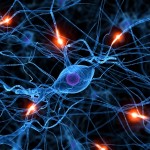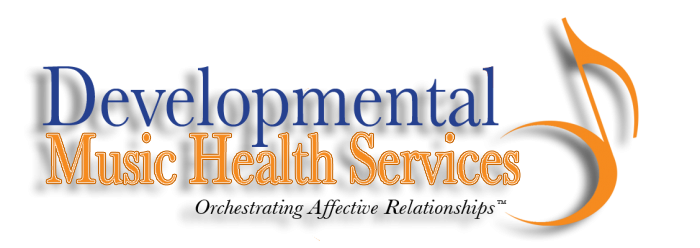While working towards my Master of Music degree at Colorado State University, I had the opportunity to take several neuroscience classes. Neuroanatomy (my favorite!), neurodevelopment, neuropsychology – it gave me a wonderful, broad understanding of how the brain and body functions. These classes have profoundly guided the way I approach my therapeutic work.

A neuron fires
I intend to include information about music and brain function and figured it would be prudent to have the first post in this category cover basic information and terminology necessary to understand future posts.
So, here we go, the first 5 things you need to know about our brain:
1) Brain cells are called neurons. Neurons have a cell body, similar to most other cells in our body. They also have specialized extensions that are connected to the cell body: dendrites, which pick up information, and an axon, which passes on information. Each neuron has many dendrites, which are used to receive inputs, or information, from many other cells. And even though neurons only have one axon, that axon branches out into terminals and can influence many other cells.
2) Neurons are connected via synapses. The synapses are how neurons communicate with each other. A synapse is actually a small gap through which chemicals, called neurotransmitters, pass. Neurotransmitters are released from a cell’s axons, then pass through the gap (the synapse) to the next cell, whose dendrites pick up it up.
3) A group of neurons connected together through synapses form a network. A network is like a circuit and neurons connected in a network generally perform a specific function.
4) Networks are functionally connected into systems. There are four basic systems in our Central Nervous System (CNS), listed below from the most simplistically organized to the more complexly organized. They are:
- Spinal Cord – The spinal cord carries information about pain, touch, and proprioception (our awareness of where our body is) back and forth between our periphery (e.g. our arms, legs, fingers, etc.) and our brain.
- Brainstem – This area controls basic, but vital, life-sustaining functions, such as heart rate, consciousness/alertness, respiratory rate, and blood pressure.
- Limbic System – This system is still subconscious and it involved in emotions, memory, motivation, and “drive” behaviors (e.g. needing to eat or procreate).
- Neocortex – This is the area we usually think of as the “brain.” It is responsible for all conscious thought and for things like attention, decision making, processing sensory information, executing voluntary movements, language, and abstract thinking.
The brainstem, limbic system, and neocortex are part of what is generally referred to as the brain.
5) Neurons are unlike any other cells in our body – they have the ability to change based on our experiences. This is called plasticity (or neuroplasticity). Neurons are designed to respond, modify, and re-organize based on our experiences. This is how learning occurs.
So there you go – your first, basic introduction to our nervous system. It’s just going to get juicier from here!


 orcid.org/0000-0001-8665-1493
orcid.org/0000-0001-8665-1493






{ 0 comments… add one now }
You must log in to post a comment.
{ 4 trackbacks }